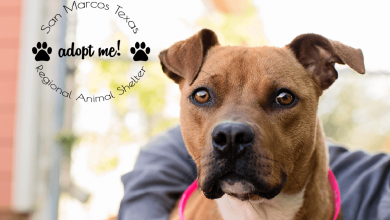FREE Soil Testing for Urban Gardeners
AUSTIN, Texas— With the arrival of spring and warmer temperatures, gardeners begin to think about the many varieties of crops they’ll want to plant. First, however, they’ll need to put some thought into the quality of their garden’s soil. Austin Brownfields Revitalization Office, part of Austin Resource Recovery, is making this process easy by sponsoring free soil testing at this year’s Soil Kitchen. The Kitchen will be open April 14-17 from 9 a.m. to 2 p.m., at Parque Zaragoza Recreation Center, 2608 E. Gonzales Street, 78702. Representatives from the Region 6 Environmental Protection Agency and the City of Austin Brownfields Revitalization Office will be on hand to test soil for the presence of heavy metals. The samples will be sent to a laboratory to be tested for soil nutrients and all results will be available anonymously online.
“Some urban soils can hold contamination, mostly from past use of leaded gasoline and lead-based paint. As a result, residents—especially pre-school age children—risk exposure to lead and other metals in the soil,” said Christine Whitney, program manager for Brownfields Revitalization Office. “One way we can reduce this risk is through conducting a free Soil Kitchen. The idea behind this event is that Austin residents can have their food garden soil tested for nutrients (present or lacking) and simultaneously analyze their samples for any risks from heavy metals. It’s free, anonymous and accessible. In the process, we help teach Austin’s urban gardeners how to grow food that’s safe to eat,” said Whitney.
With technical support from the Environmental Protection Agency, gardeners can bring in samples for sophisticated testing in the EPA’s mobile lab at no charge. “Historical uses of land, even for residential use, may have left behind heavy metals. The Soil Kitchen provides an opportunity to inform gardeners of what’s in their soil and what can be done to improve soil quality and food safety,” Whitney said.
The testing is confidential. Gardeners simply list their initials and the closest intersection on their quart size sample bags. A number is assigned to the sample and the gardener can look up the number online around mid-May.
On Saturday, April 16, the Soil Kitchen will coincide with the East Austin Garden Fair (EAGF). The Fair is also at Parque Zaragoza, 2608 Gonzales Street, Austin, 78702, and is a free event designed for the whole family. The EAGF will include a variety of enjoyable activities ranging from building a rain barrel, keeping bees to raising backyard chickens.
The Soil Kitchen is a perfect opportunity for backyard, school and community food gardens to learn more about safely and effectively growing great, healthy food. For more information about the Soil Kitchen and soil sampling, please visit: www.austintexas.gov/
Directions for Soil Sampling:
- Gather together a garden trowel or spade; a spoon; a quart size, plastic bags; a waterproof marker; and a clean shallow pan.
- Label the bag(s) with the following information: your initials, the date you took your sample and the approximate location of your garden plot. PLEASE do not give your exact address. Instead, please list your street and the closest cross street. This is for the protection of your privacy.
- Go to your garden area and sample the soil in five to 10 different spots around the garden bed(s). Sample to a depth of six inches, using your trowel to make a cone shape into the soil and then extract the samples. Place each of the collected samples into the shallow pan.
- When you have completed the sampling work, take your spoon and mix all the soil together in the shallow pan to obtain a more representative sample.
- If the soil is very wet, leave the soil to dry out in the pan overnight. Make sure to remove any rocks, grass or dead plant material that could get in the way.
- Fill your plastic bag until it is half -full (2 cups of soil) and seal it shut. Your one bag of soil will be sampled for the presence of heavy metals AND for soil nutrients.
- Drop your sample off at the Soil Kitchen. We will give you a card that has information on how to obtain your soil results online around mid-May.






